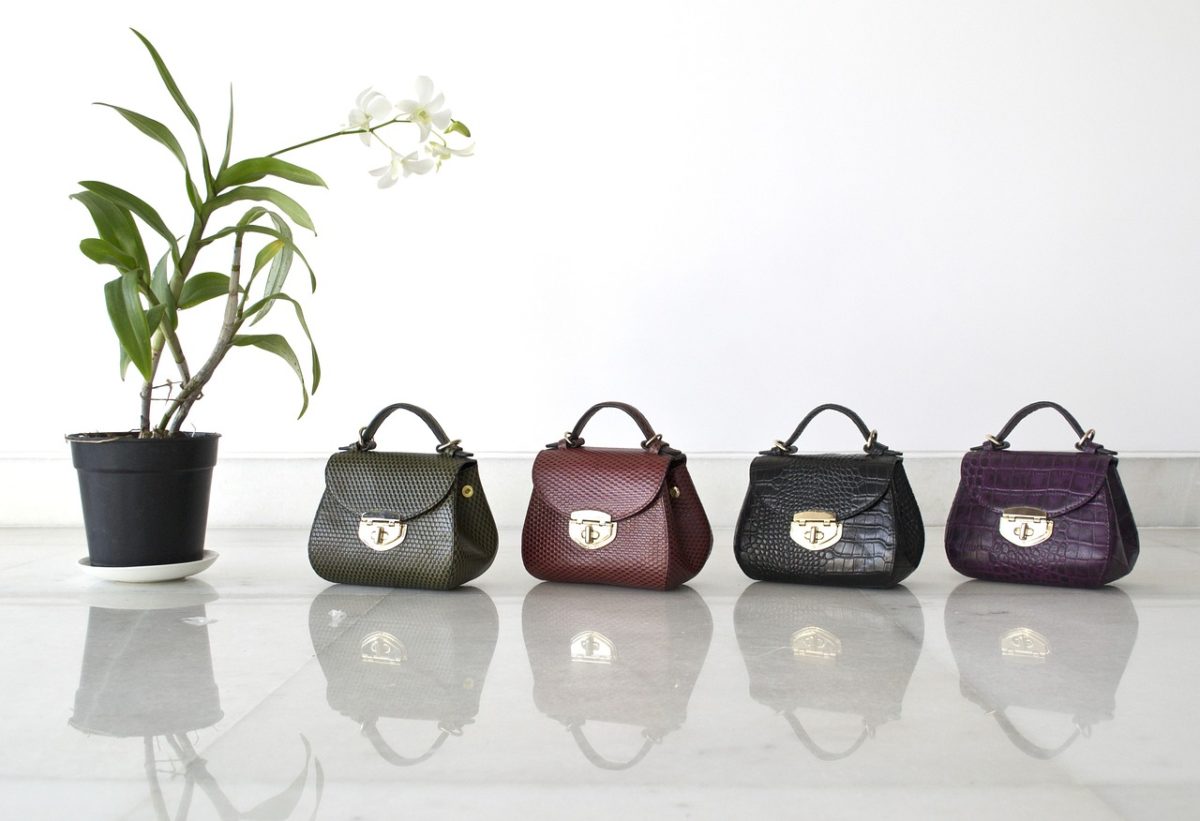When done right, a handbag business can be quite lucrative and creatively fulfilling. It not only gives you the chance to showcase your love for design and fashion but also enables you to leverage modern arts. For your handbag business to be successful, you have to pre-determine your short term and long term goals. It keeps your business moving in the right direction.

Uniqueness is another factor that is vital for the success of a handbag business. Whether you wish to design your handbags from scratch or purchase them in bulk from a factory, ensure that they are as unique as possible. This will set you apart from your competitors and give you an advantage in the market. Before you start researching on how to start a handbag business at home, here are a few industry factors that you must be aware of.
Niche Ideas in the Handbag Business
Thre are many different kinds of bags, each having a wide range of usage in our day to day lives. This is why the handbag business is such a profitable venture. Choosing a niche in this venture will not only give you a path to success but also find you a place in the market. Whether you prefer leather, Hobo, Non-woven, or Drawstring bags, applying the correct strategy will see to the success of your business.
Competition in the Handbag Business
Like most other ventures involving fashion and design, the handbag business is quite competitive. The market continues to grow with new brands entering the industry every year. Competition should, however, not discourage you from venturing into the business. With the correct strategy and a good business plan, the market should accommodate your new handbag business and see to its success.
Buying a Franchise or Starting From Scratch
The handbag business is a terrific venture to start from the comfort of your home. The business not only offers little or no operating overheads that bite into monthly profits but can also be operated on a part-time basis. Creating a unique design with exotic materials can give you a competitive advantage in the market.
Handbags can be sold directly to customers through online platforms or by displaying them in fashion and craft shows. You may also sell your products to fashion retailers in wholesale or place them in local retail shops on consignment. Starting your home handbag business from scratch is, therefore, more advantageous than buying a franchise.
Now that you have considered the various industry factors, here is a step by step guide on how to start a handbag business.
Develop a Unique Selling Point (USP)
The unique selling point of a brand should be at the forefront of any entrepreneur’s business plan. It is what gives your brand the chance to stand out from the crowd. It doesn’t necessarily have to do with your product’s design process.
Simple factors such as convenience, customer service of your brand, and reliability could serve as USP and make your brand stand out from the crowd. Ensure, however, that you do not do too much when developing the uniqueness of your product. The aim is to blend into an already crowded market while providing a unique factor that appeals to a unique customer base.
Find your Place in the Market
Before you stock up inventory for your new business idea, it is essential to find out whether your concept has a place in the market. If the answer is yes, you have to find out what differentiates your products from others in the market and makes it appear unique. These factors are essential for finding new customers and perhaps to persuade your competitor’s customers to buy from your brand instead.
Set Your Price Points
It is essential to determine who the target customer for your product is. Whether you are targeting those who focus on luxury products or the ones who appreciate fast fashion, you must develop a brand that suits their needs. Here, you determine how cheap or expensive your product will be.
Ensure that you conduct an exhaustive market analysis during the initial stages of developing your handbag line. It will enable you to clearly define the landscape of the market that you will be releasing your products into and find out how competitive it is. It is therefore essential not to overprice or underprice your goods.
To determine your prices, you can add the total cost of your direct materials to that of your direct labor. Ensure to include your total manufacturing overhead costs to determine the total value of your product. If you are sourcing products from a manufacturer, you could include the initial cost of inventory, along with shipping and labor costs.
Your selling price point should cover all these costs and give you a desirable amount of profit. If your aim is to set up an e-commerce site or sell to outlets, you should be aware that your prices must stay in the same range as those of the outlets or e-commerce sites.
How to Finance Your Handbag Business
There are various ways in which you can raise finances for your handbag business. It is essential to look into all the options you have and settle for a suitable one. Friends and family can lend you the money or perhaps make a free contribution to your business. You may also consider starting a crowdfunding account on the various internet sites that are dedicated to this purpose.
Another great way to fund your handbag business is by using the savings that you may already have in the bank. Alternatively, you can apply for grants or loans from various banks and local business enterprise offices. For most of these funding options, you need to present a business plan to qualify for funding.

A business plan is an essential tool for presenting your idea. It also displays the seriousness of your concept, therefore making it easier for you to raise the required finances. Your business plan must not be too long, but it should contain enough information on the requirements for how to start a handbag business and a forecast of any profits or losses that you may incur.
Materials
Whether you will manufacture your handbags from scratch or order them from a factory, it is essential to pre-determine the material that you are going to work with. Keep in mind that the material you select will reflect the price points at which you retail the bags. Ensure that the material you choose is accommodative to your price point to avoid incurring some significant losses. If you don’t have much knowledge of the materials and fabrics used to make handbags, you can attend trade fairs or do some research.
The Development Process
One of the most exciting parts of a business venture is bringing the idea that you have to life. If you wish to manufacture your handbags from scratch, ensure that your plan is viable and can easily be understood by a pattern cutter and a machinist.
Your idea should be dynamic enough to support changes when necessary. Find machinists and pattern cutters who specialize in handbag development to create your first prototype. When you are satisfied with the result, you can send the sample to a reliable factory that can manufacture your bags at a fair price point.
Do a Wear Test
Wear testing your products before you release them to the market is essential. Overdelivering on quality as a new brand is imperative for success in the long run. Wear testing is quite simple. You can start using one of your early samples before the production process of your final samples is completed.
Doing so will give you an indication of the performance of the design and material of the handbag. Data that you gather from your wear test will help you realize which parts of your product need improvement. It also enables you to identify any problems that potential customers may encounter while using the product and get the chance to fix them.
Aftercare services
Offering aftercare services to your customers after you have sold your products to them is vital. It is an excellent reflection of the values that your brand stands for. Products that are produced using unique materials and ones that are handmade especially require aftercare. Furthermore, offering aftercare services enables your brand to build a relationship with the customers. A good customer relationship is not only essential for customer retention but also attracts new customers through referrals.

When selling your products, ensure that you include a detailed set of instructions for aftercare. The list should consist of the do’s and don’t’s of cleaning the fabric that the handbag is made of. Guidelines on the correct storage and use of the product are also vital. Such information will reduce the instances of damage to the product and ensure that the product serves your customer for a long time.
Getting most of the above point right will give you a head start as you venture into the competitive arena of selling handbags.











